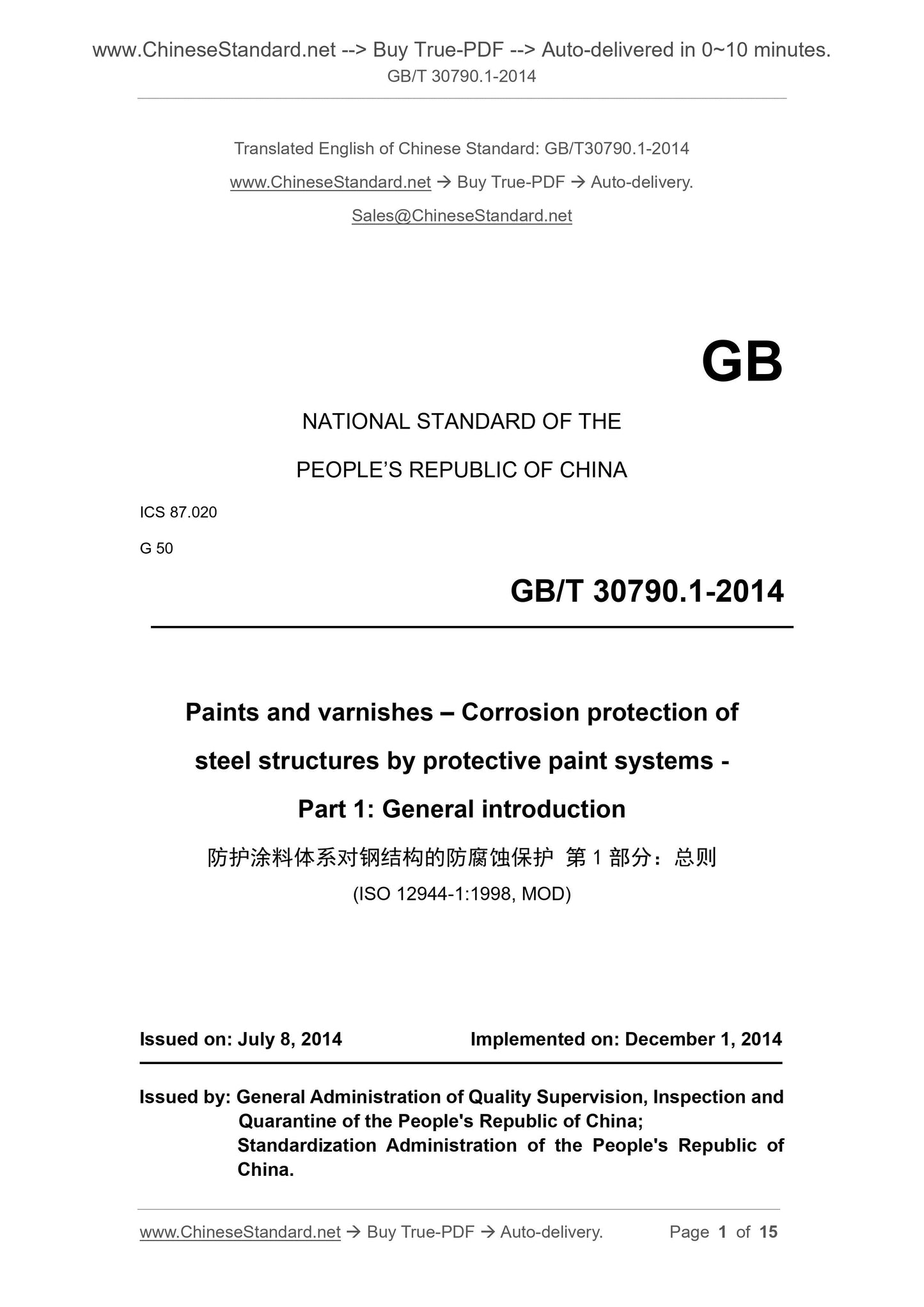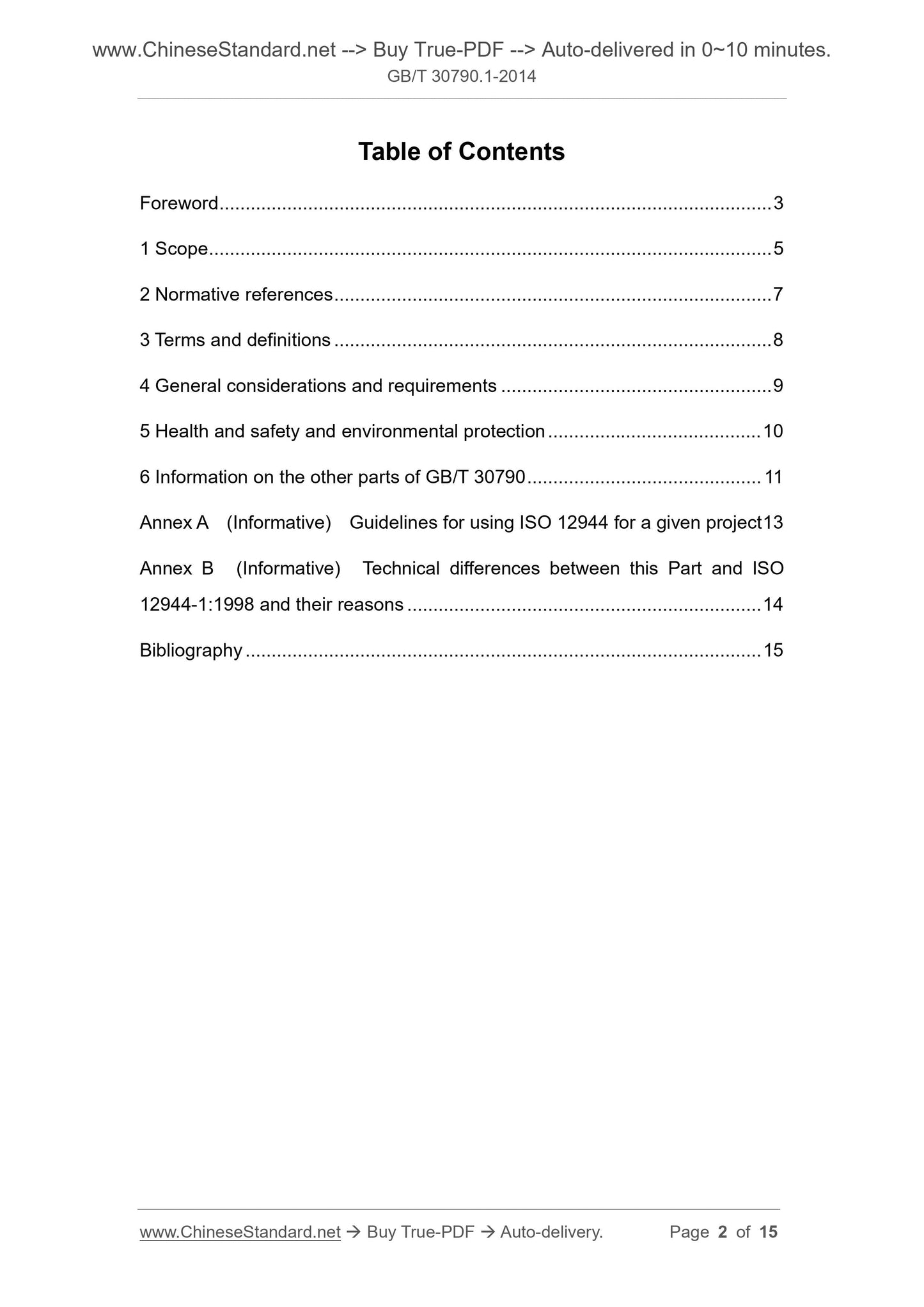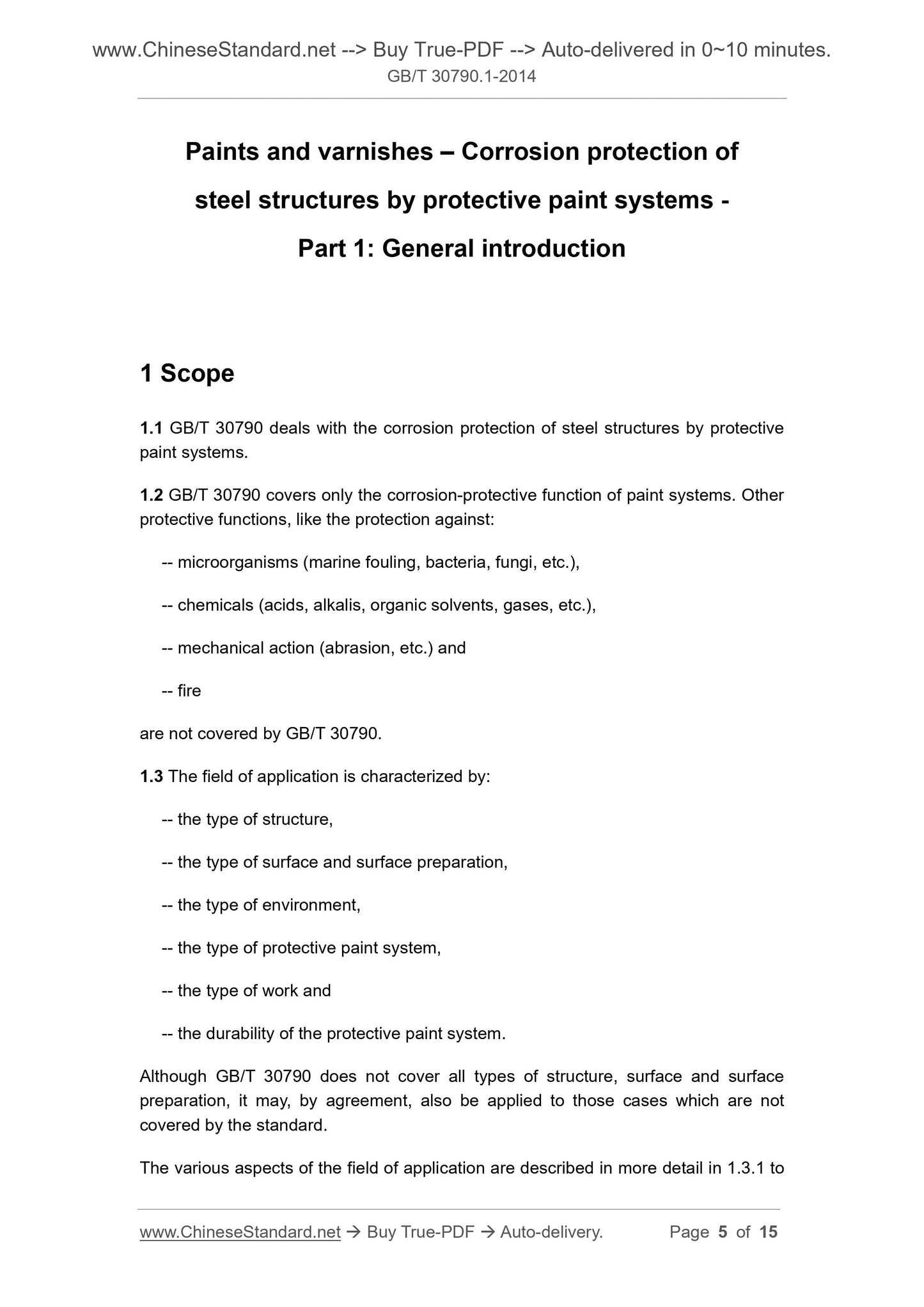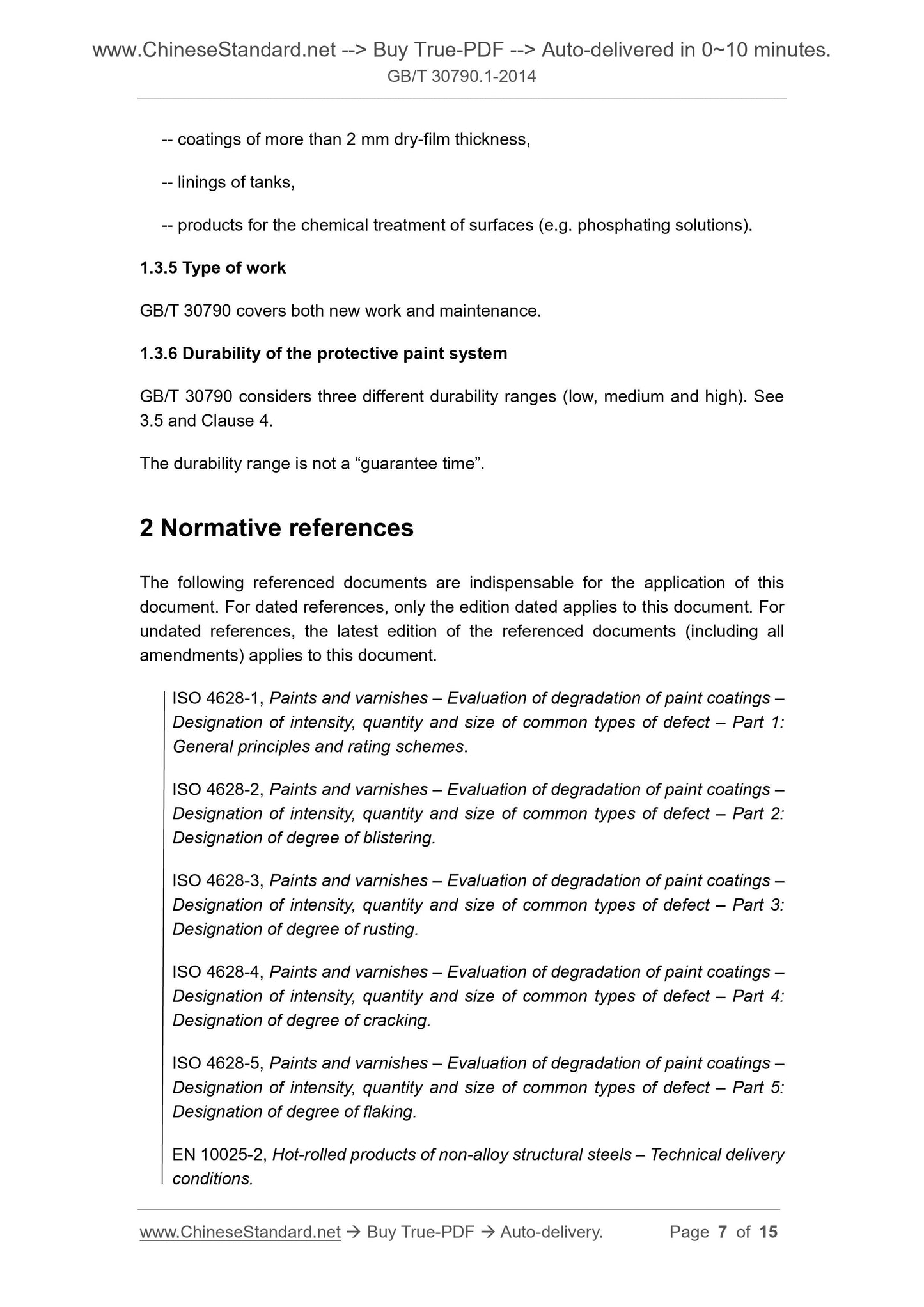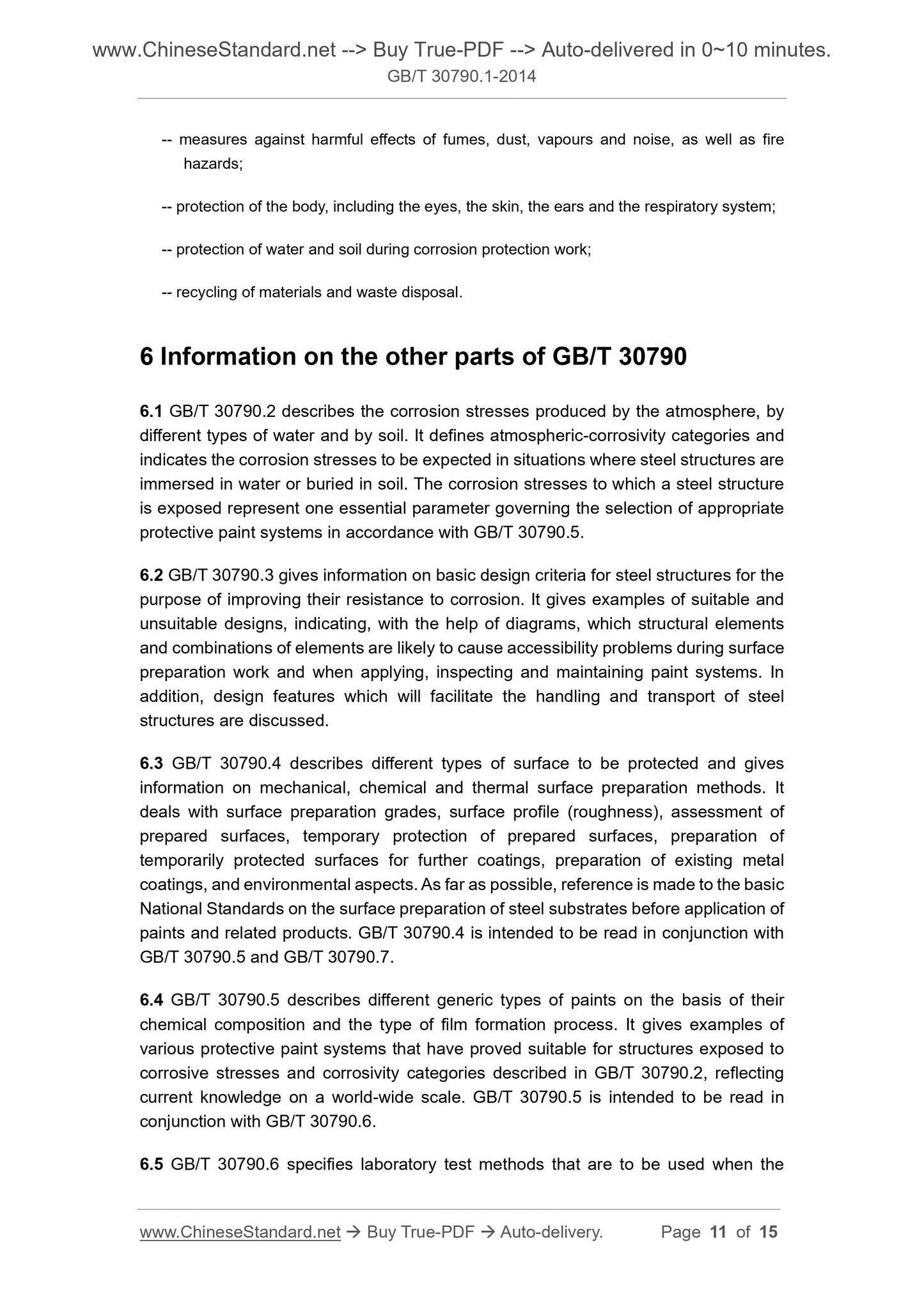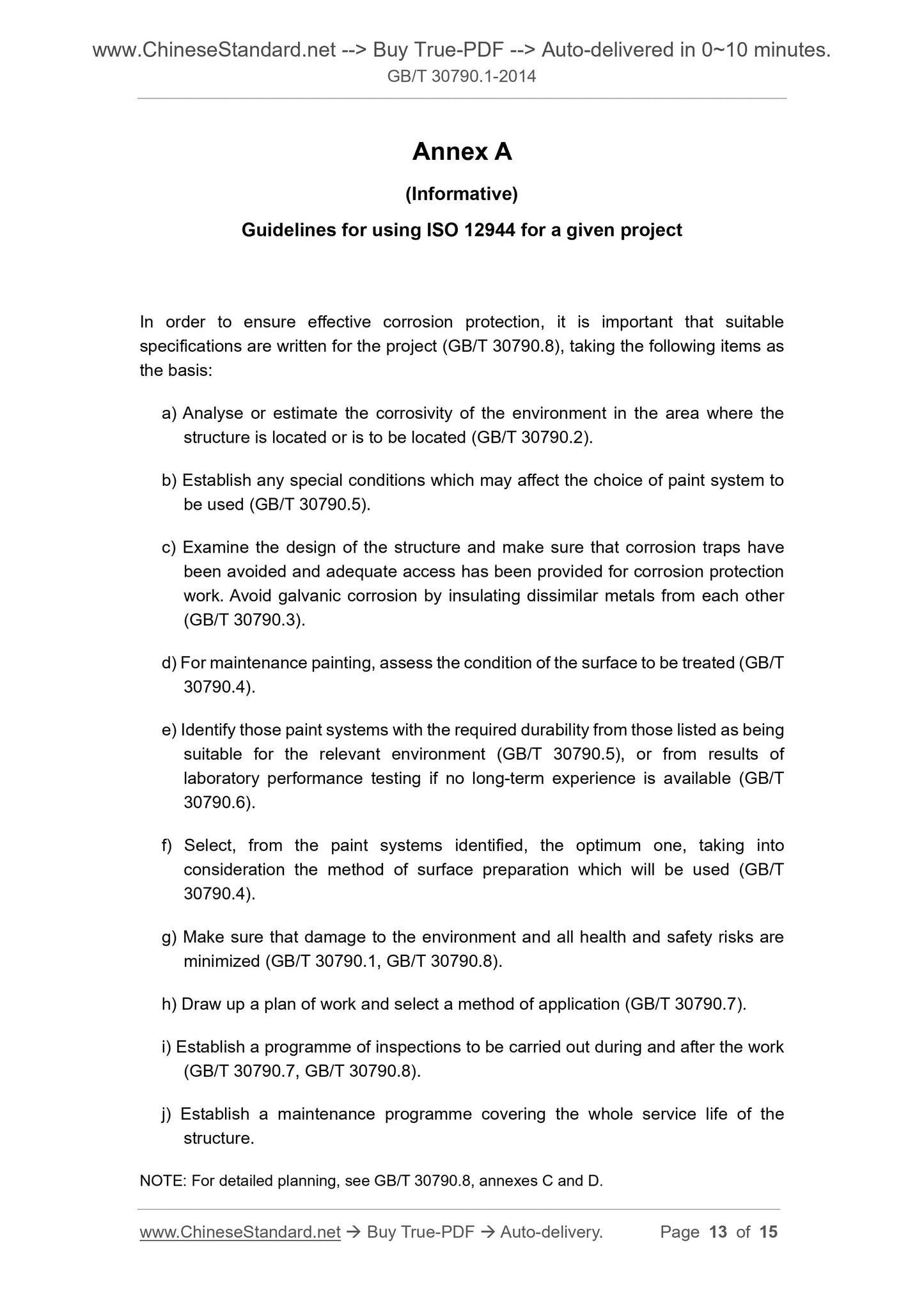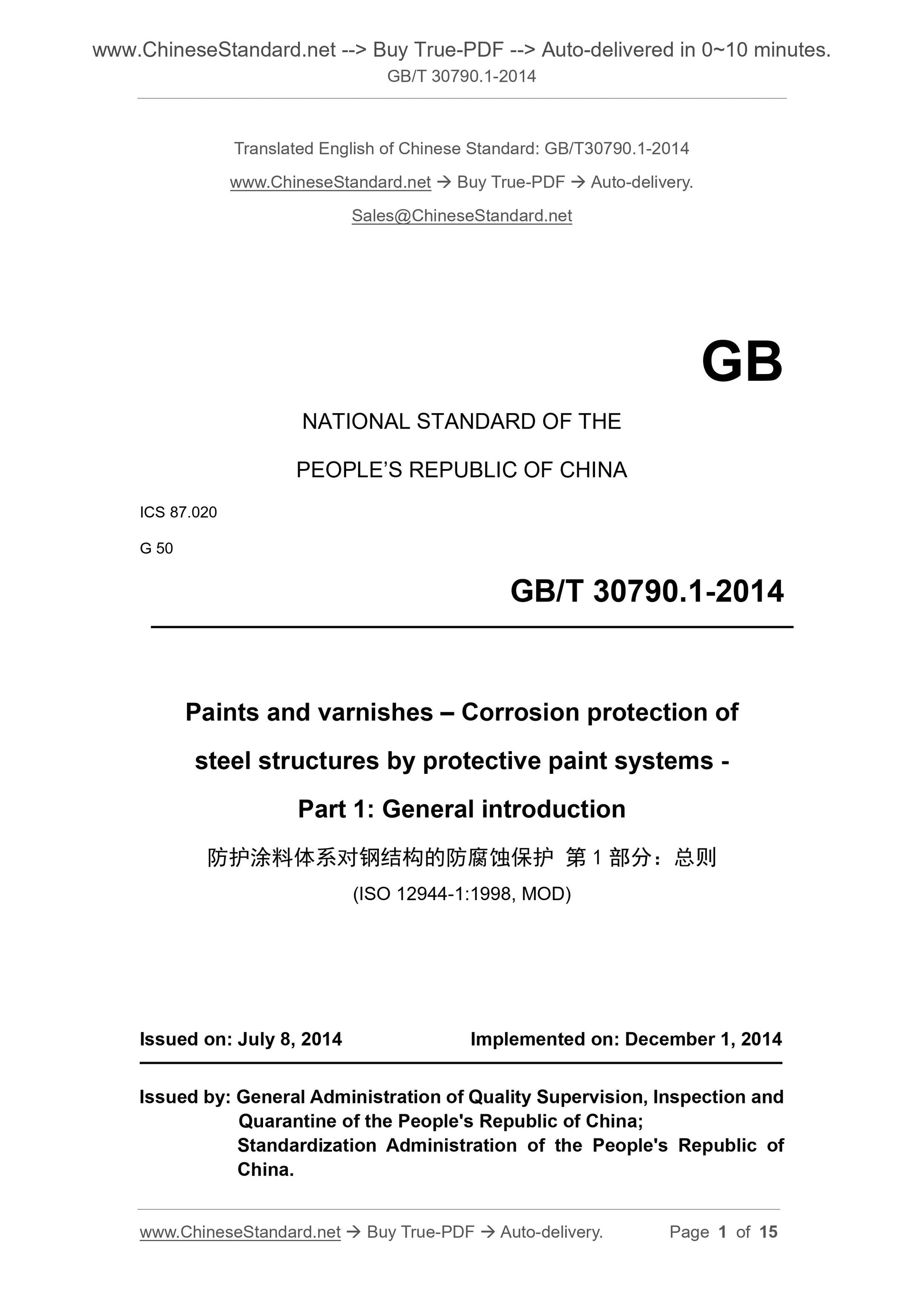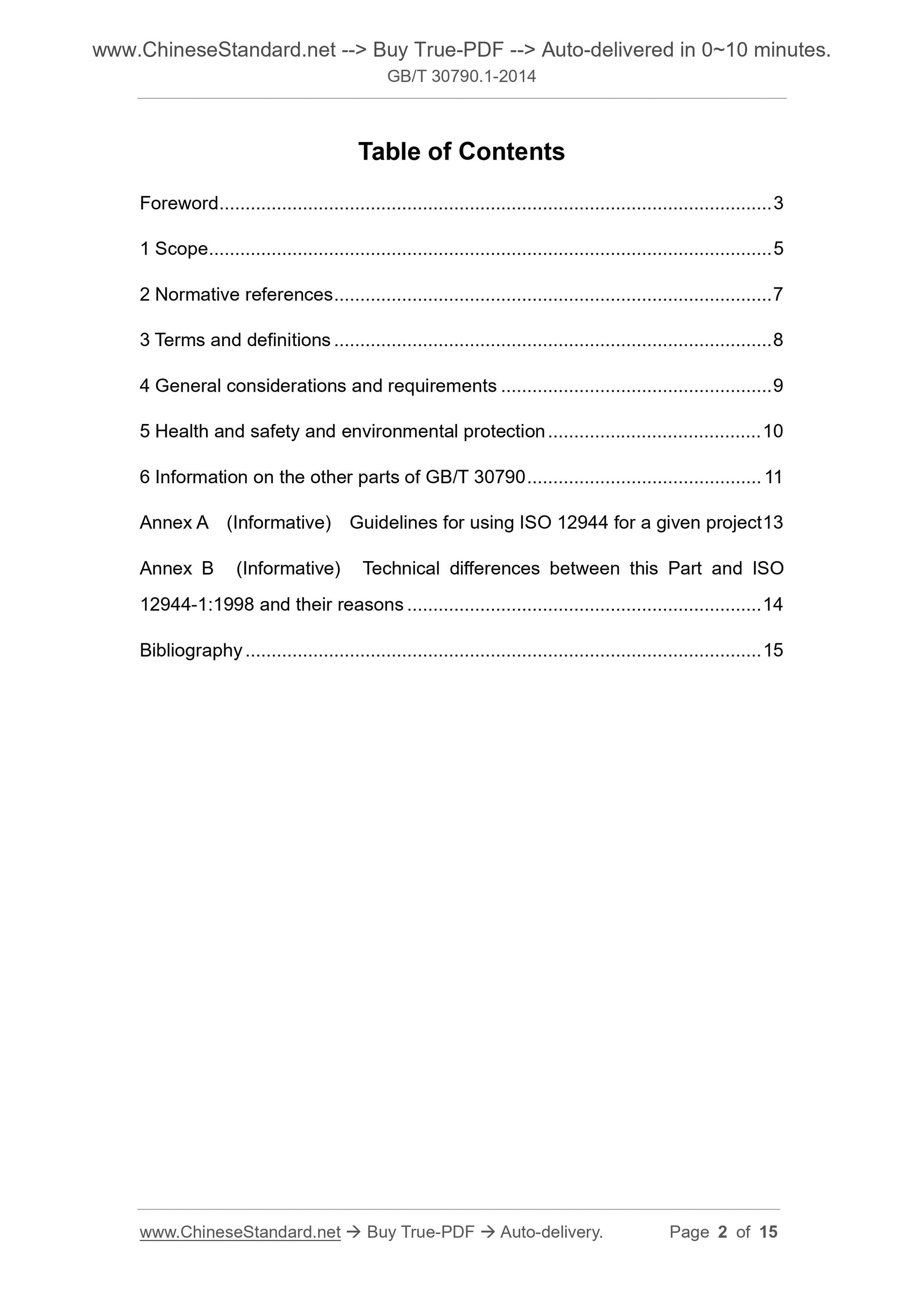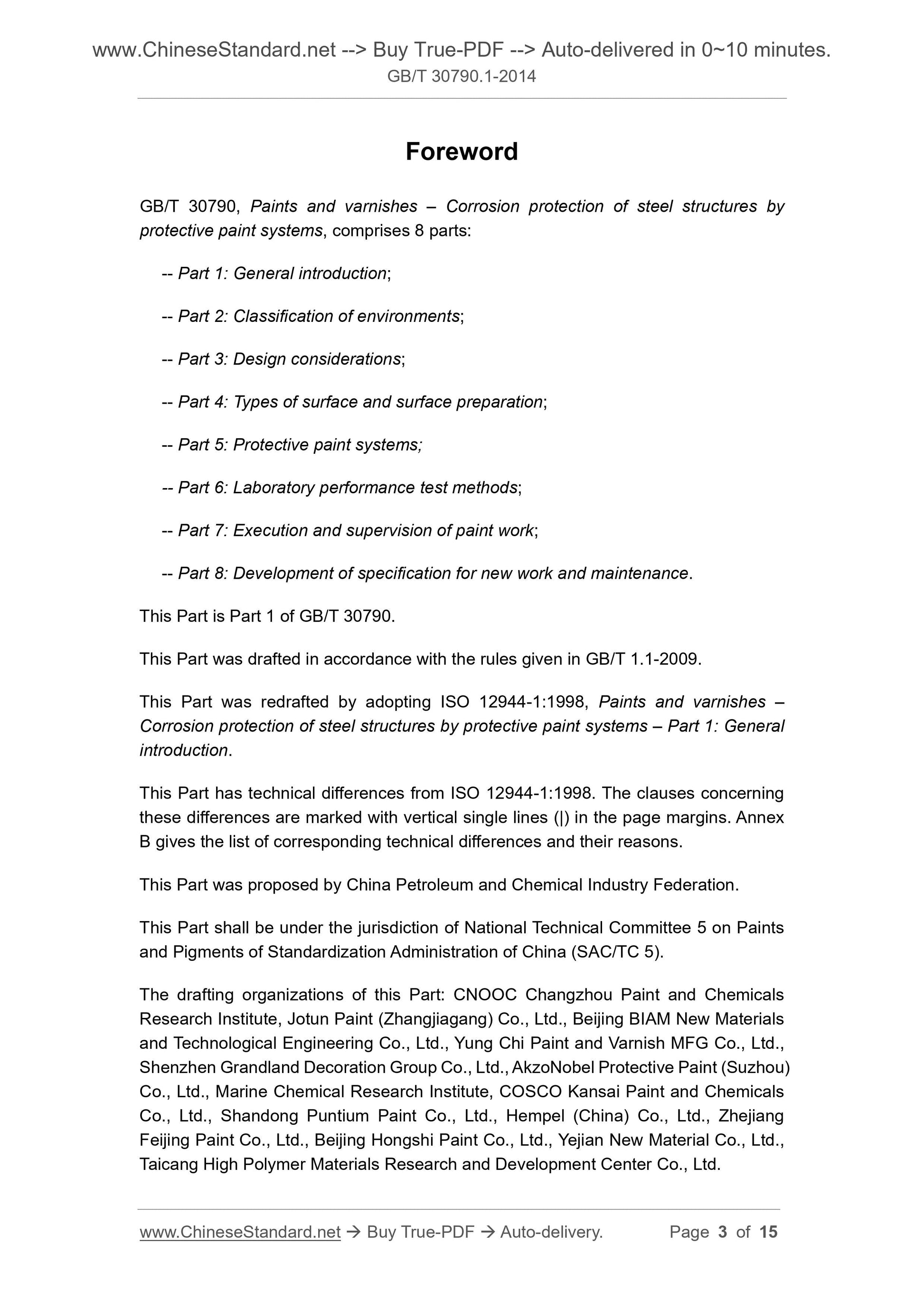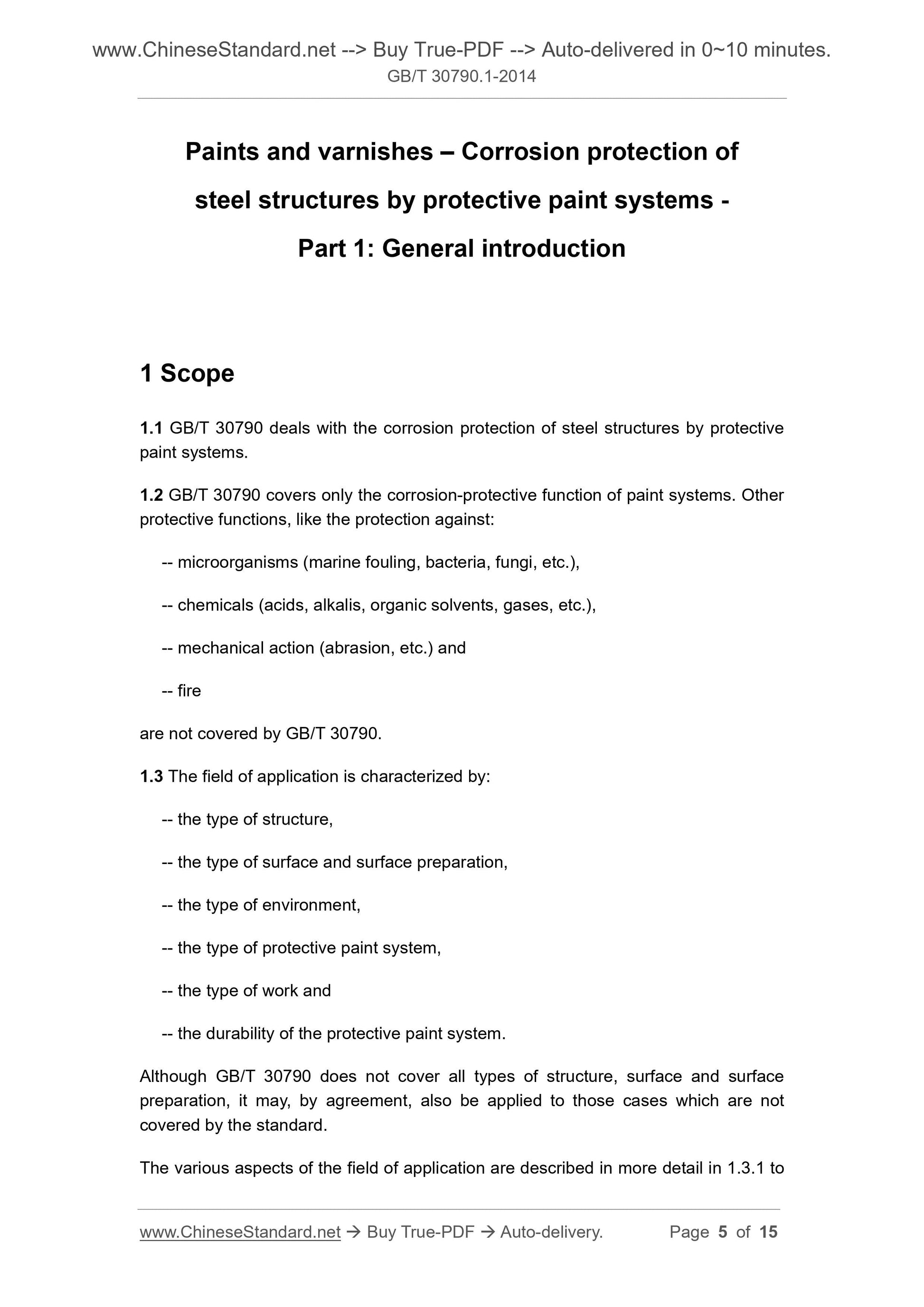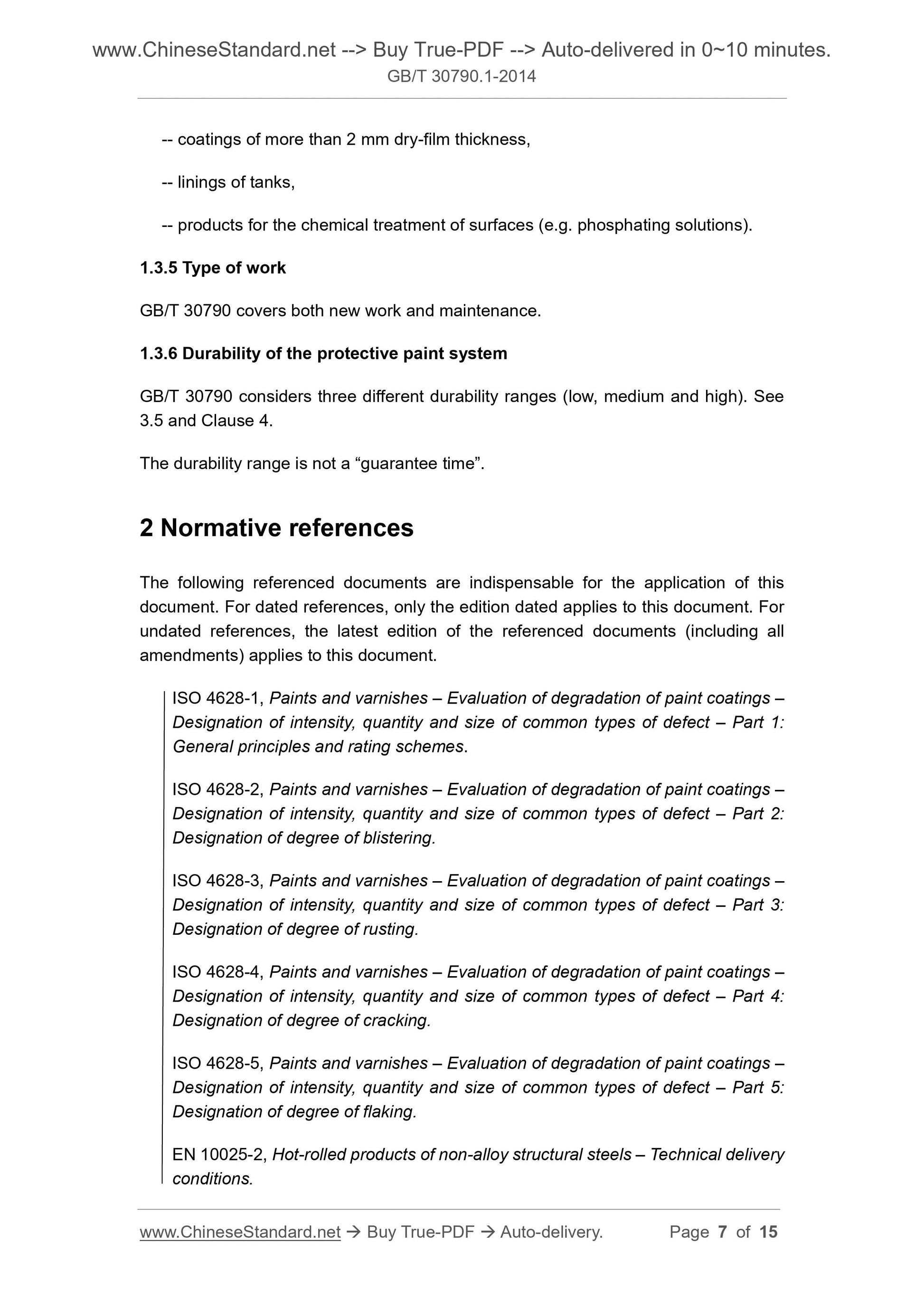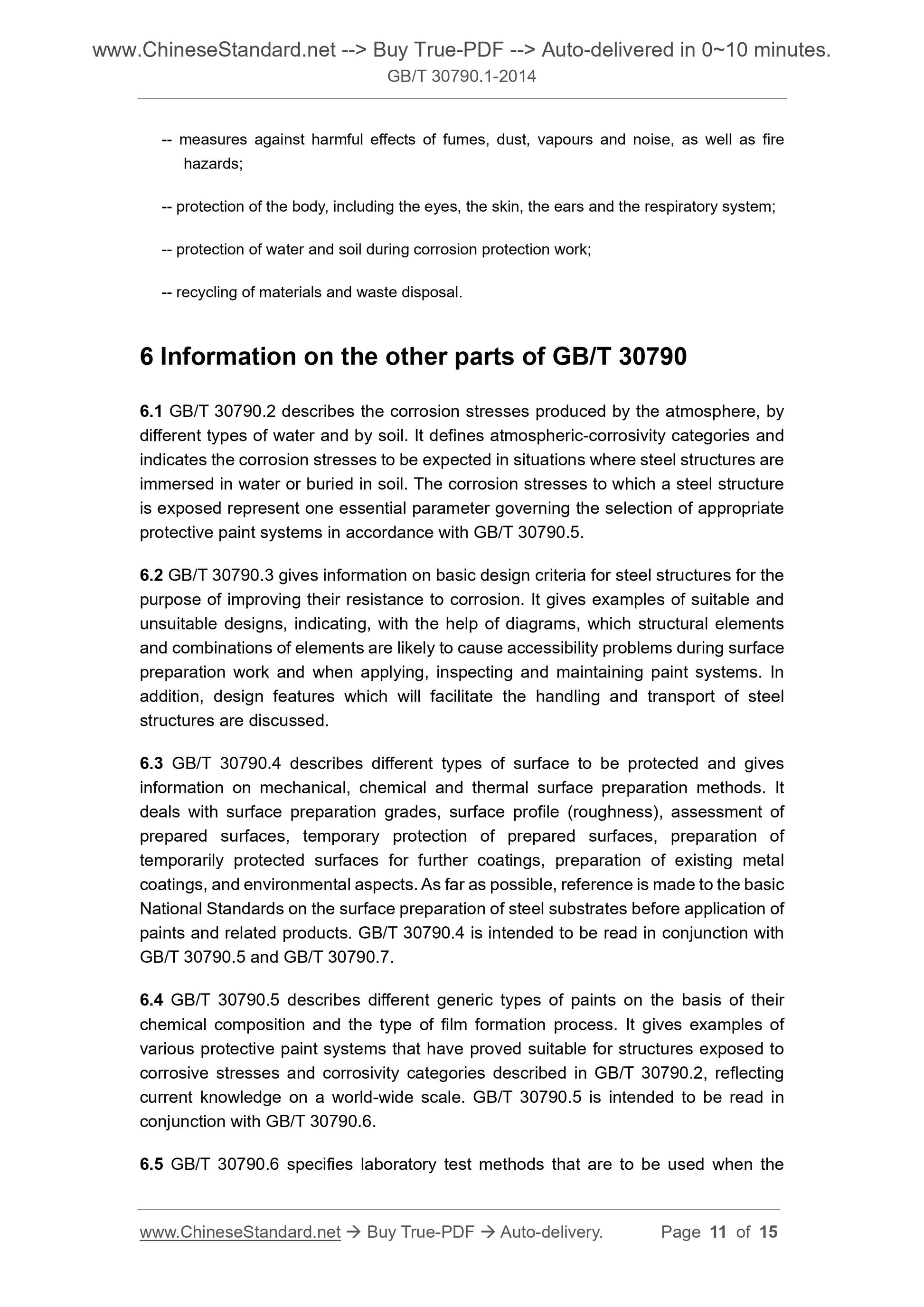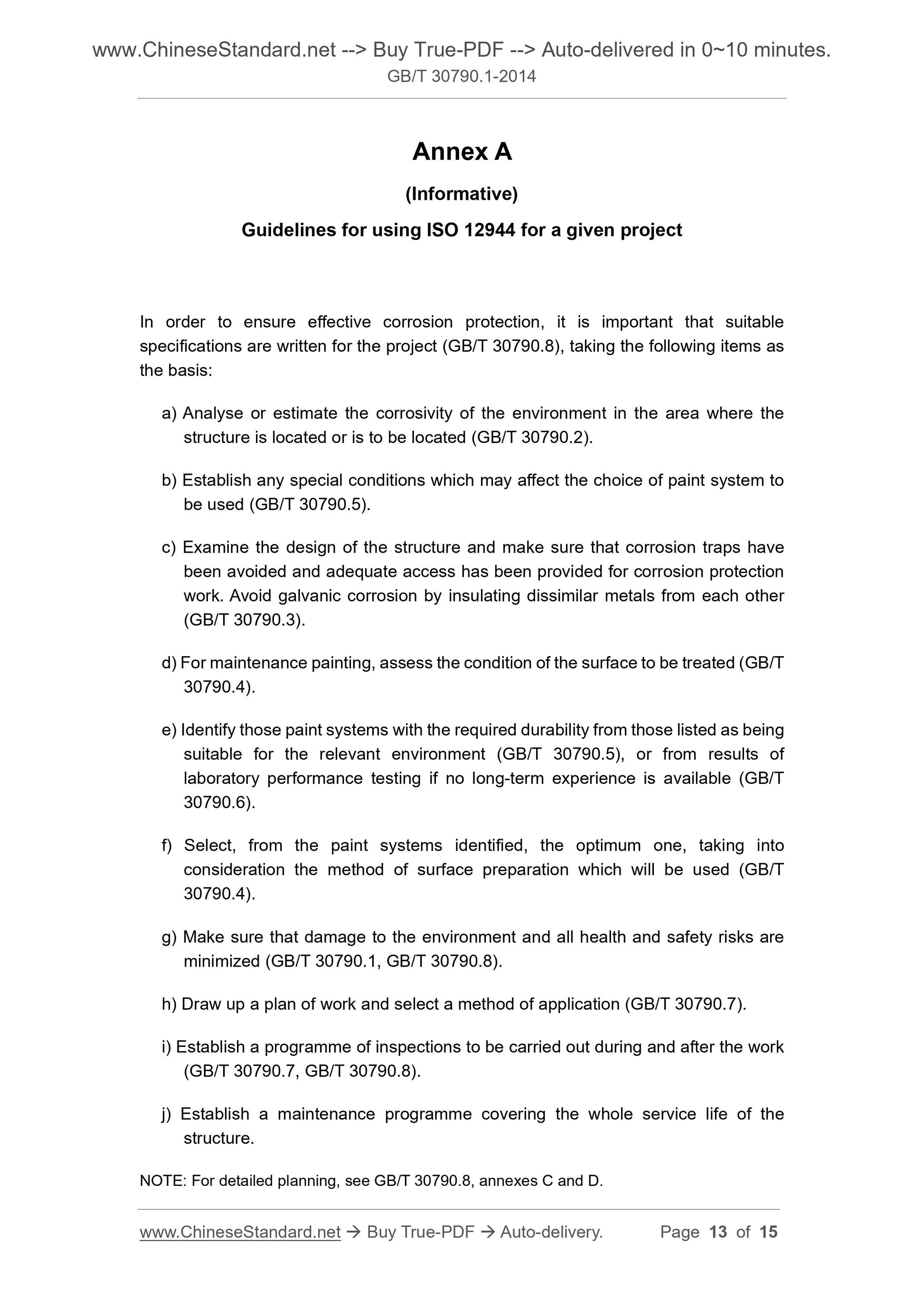1
/
of
7
www.ChineseStandard.us -- Field Test Asia Pte. Ltd.
GB/T 30790.1-2014 English PDF (GB/T30790.1-2014)
GB/T 30790.1-2014 English PDF (GB/T30790.1-2014)
Regular price
$145.00
Regular price
Sale price
$145.00
Unit price
/
per
Shipping calculated at checkout.
Couldn't load pickup availability
GB/T 30790.1-2014: Paints and varnishes -- Corrosion protection of steel structures by protective paint systems -- Part 1: General introduction
Delivery: 9 seconds. Download (and Email) true-PDF + Invoice.Get Quotation: Click GB/T 30790.1-2014 (Self-service in 1-minute)
Newer / historical versions: GB/T 30790.1-2014
Preview True-PDF
Scope
1.1 GB/T 30790 deals with the corrosion protection of steel structures by protectivepaint systems.
1.2 GB/T 30790 covers only the corrosion-protective function of paint systems. Other
protective functions, like the protection against.
-- microorganisms (marine fouling, bacteria, fungi, etc.),
-- chemicals (acids, alkalis, organic solvents, gases, etc.),
-- mechanical action (abrasion, etc.) and
-- fire
are not covered by GB/T 30790.
1.3 The field of application is characterized by.
-- the type of structure,
-- the type of surface and surface preparation,
-- the type of environment,
-- the type of protective paint system,
-- the type of work and
-- the durability of the protective paint system.
Although GB/T 30790 does not cover all types of structure, surface and surface
preparation, it may, by agreement, also be applied to those cases which are not
covered by the standard.
The various aspects of the field of application are described in more detail in 1.3.1 to
-- coatings of more than 2 mm dry-film thickness,
-- linings of tanks,
-- products for the chemical treatment of surfaces (e.g. phosphating solutions).
1.3.5 Type of work
GB/T 30790 covers both new work and maintenance.
1.3.6 Durability of the protective paint system
GB/T 30790 considers three different durability ranges (low, medium and high). See
3.5 and Clause 4.
The durability range is not a “guarantee time”.
Basic Data
| Standard ID | GB/T 30790.1-2014 (GB/T30790.1-2014) |
| Description (Translated English) | Paints and varnishes -- Corrosion protection of steel structures by protective paint systems -- Part 1: General introduction |
| Sector / Industry | National Standard (Recommended) |
| Classification of Chinese Standard | G50 |
| Classification of International Standard | 87.020 |
| Word Count Estimation | 12,174 |
| Date of Issue | 7/8/2014 |
| Date of Implementation | 12/1/2014 |
| Quoted Standard | ISO 4628-1; ISO 4628-2; ISO 4628-3; ISO 4628-4; ISO 4628-5; EN 10025-2 |
| Adopted Standard | ISO 12944-1-1998, MOD |
| Regulation (derived from) | 2014 National Standards Bulletin No. 18 |
| Issuing agency(ies) | General Administration of Quality Supervision, Inspection and Quarantine of the People's Republic of China, Standardization Administration of the People's Republic of China |
| Summary | This standard applies to protective coating systems for corrosion protection of steel structures. Corrosive atmospheric environment is divided into six grades; steel structures immersed in water or buried in the soil is divided into three levels. |
Share
